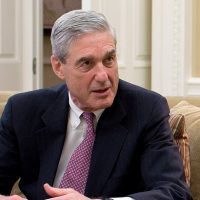 “President Trump reportedly is readying an order to declassify five key buckets of documents on alleged FBI abuses. … My sources agree these 10 questions are the most important to be answered in the forthcoming probes…”
“President Trump reportedly is readying an order to declassify five key buckets of documents on alleged FBI abuses. … My sources agree these 10 questions are the most important to be answered in the forthcoming probes…”
(John Solomon – The Hill) Soon, the dust will settle from special counsel Robert Mueller’s report, and Americans will have a fuller understanding of why prosecutors concluded there wasn’t evidence to establish that Donald Trump and Russia colluded to hijack the 2016 election.
At that point, many voters exhausted by the fizzling of a two-year scandal, once billed as the next Watergate, will want to move on like a foodie from an empty-calorie shake.
But a very important second phase of this drama is about to begin, as Attorney General William Barr, Department of Justice (DOJ) Inspector General Michael Horowitz and Senate Judiciary Committee Chairman Lindsey Graham (R-S.C.) put the Russia collusion investigators under investigation.
Their work will be, and must be, far more than just a political boomerang.
It must answer, in balanced terms, whether the FBI was warranted in using the most awesome powers in the U.S. intelligence arsenal to spy on Republican presidential nominee Donald Trump’s campaign at the end of the 2016 election.
Investigators must determine, with neutrality, whether the bureau improperly colluded with paid agents of Democratic rival Hillary Clinton’s campaign — Fusion GPS and its British operative, Christopher Steele — and then tried to hide those political ties and other evidence from the nation’s secret intelligence court.
For the likes of FBI castoffs James Comey, Andrew McCabe and Peter Strzok, or Obama-era intelligence bosses John Brennan and James Clapper, there will be the additional uncomfortable reality that the Russia collusion narrative that they so publicly weaved through testimony, TV appearances, for-profit books and leaks, turned out to be as unsubstantiated as the Loch Ness monster.